For enterprises, maintaining control over the ever-expanding and complex IT environments is a huge challenge. This is where a Configuration Management Database (CMDB) becomes really important. Whether you’re an IT leader, a service manager, or a CIO driving digital transformation, understanding the role of a CMDB is critical to efficient IT service management (ITSM) and infrastructure visibility.
In this guide, we explore what a CMDB is, its importance in ITSM, key features of top platforms, a comparison of leading tools, how AI is revolutionizing CMDBs, and what to consider when selecting one for your organization.
What Is a CMDB?
A Configuration Management Database (CMDB) is a centralized repository that stores information about the configuration items (CIs) in your IT environment. These CIs can include hardware, software, systems, facilities, people, documentation, and their relationships.
Essentially, a CMDB answers three key questions:
- What assets do we have? (Inventory)
- How are they configured? (Configuration)
- How are they connected? (Relationships)
A CMDB provides a single source of truth about your IT landscape and is foundational to several ITSM processes, such as incident, change, problem, asset, and compliance management.
Why is a CMDB Important for ITSM?
In ITSM frameworks like ITIL, the CMDB is core to service delivery and support. Here’s why it matters:
1. Improved Incident and Problem Management
When an issue arises, support teams can quickly identify which systems and components are impacted. This reduces mean time to resolution (MTTR) and prevents recurrence by analyzing underlying dependencies.
2. Efficient Change Management
A CMDB helps assess the potential impact of changes before they are implemented by showing the upstream and downstream relationships of a CI. This minimizes risk and improves the success rate of changes.
3. Better Compliance and Auditing
With accurate data on system configurations, CMDBs support regulatory compliance and simplify audit trails by showing what changed, who changed it, and when.
4. Automation and Orchestration
CMDBs are often linked with orchestration engines, enabling automated responses to incidents, deployment workflows, and infrastructure-as-code strategies.
5. Enhanced Service Visibility
Executives and stakeholders get a real-time map of the IT ecosystem, allowing better decision-making, capacity planning, and risk mitigation.
Top Features and Capabilities of Modern CMDB Platforms
Not all CMDBs are created equal. The best platforms today go beyond static asset tracking and offer dynamic, intelligent, and integrative capabilities. Key features include:
1. Auto-Discovery and Inventory Collection
Automatically detect hardware, software, and cloud assets across hybrid environments.
2. Relationship Mapping
Understand and visualize how CIs relate to each other—both physically and logically.
3. Change Tracking and Versioning
Track historical changes and configuration drift for better governance and rollback capabilities.
4. Integration with ITSM and DevOps Tools
Seamlessly connect with ticketing, monitoring, cloud, and DevOps systems for a unified workflow.
5. Data Normalization and Deduplication
Clean and reconcile conflicting or duplicate data from multiple sources.
6. Role-Based Access and Permissions
Granular control over who can view or modify specific data sets.
7. AI-Powered Insights
Predictive analytics, anomaly detection, and automated root cause analysis.
Top 10 CMDB Platforms
Here are the top CMDB platforms in the market today, spanning enterprise-grade and mid-market options:
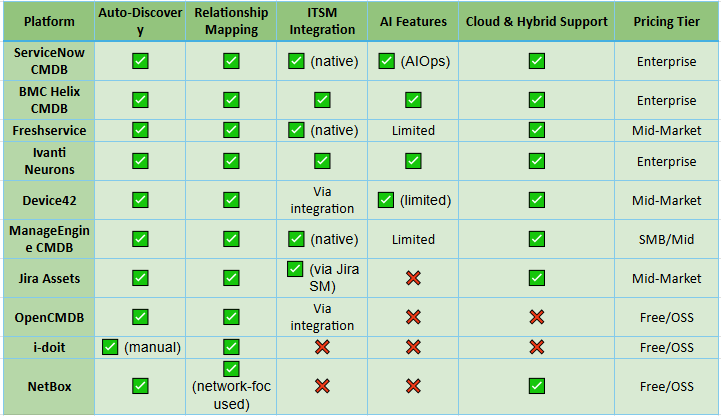
How Is CMDB Changing with AI?
Traditionally, CMDBs were static, prone to becoming outdated and inaccurate due to manual inputs and infrequent updates. AI is now transforming the CMDB into a living, breathing system that learns, predicts, and adapts.
AI-Driven Enhancements in CMDBs:
- Autonomous Discovery and Mapping
AI enhances discovery with real-time updates and intelligent mapping of dependencies, even in complex microservices or containerized environments.
- Predictive Impact Analysis
Instead of manually tracing how a change might affect systems, AI models can forecast risk based on past incidents and current dependencies.
- Root Cause Analysis and Anomaly Detection
Machine learning helps identify unusual behavior in a system and links it to recent changes or misconfigurations.
- Data Enrichment and Cleansing
AI algorithms help deduplicate, normalize, and enrich data, improving accuracy and trust in the CMDB.
- Automated Remediation
Integrating with orchestration engines, AI can trigger automated fixes, escalate issues, or roll back changes proactively.
- Conversational Interfaces
Natural Language Processing (NLP) lets users query the CMDB through chatbots or voice commands - no need to dig through complex UIs.
As CMDBs evolve into Autonomous Configuration Systems, their strategic value in IT operations will grow significantly—especially in hybrid, multi-cloud, and agile environments.
CMDB and AIOps: The Power of Context & Intelligence
As IT environments become more dynamic, the traditional CMDB faces a critical evolution. Enter AIOps (Artificial Intelligence for IT Operations)—a new class of platforms that leverage AI and machine learning to detect patterns, automate responses, and predict incidents before they happen. The synergy between CMDB and AIOps is transforming IT operations into a more autonomous, resilient system.
Why is CMDB Essential for AIOps?
AIOps ingest massive streams of data like logs, events, metrics, telemetry from across the IT landscape. But to make sense of this data, it needs context. That’s where the CMDB comes in.
The CMDB serves as the context engine for AIOps, offering a real-time view of how systems are configured, connected, and dependent on one another. With this foundation, AIOps platforms can:
- Correlate incidents more accurately using CI relationships
- Identify root causes by tracing alerts to specific services or components
- Forecast impact of changes based on configuration dependencies
- Trigger automated workflows tied to service owners and affected systems
Real-World Benefits of CMDB + AIOps
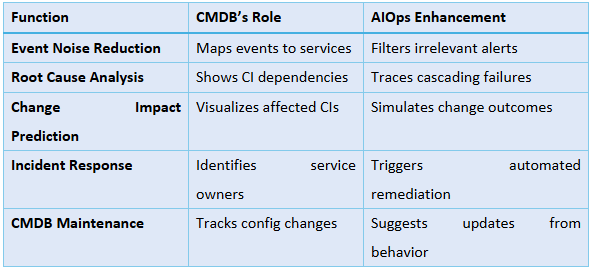
Feedback Loop for Autonomous Ops
Modern AIOps platforms also feed data back into the CMDB, helping keep it accurate by:
- Discovering new assets
- Detecting undocumented relationships
- Flagging inconsistencies or anomalies in configuration data
This bidirectional flow creates a closed-loop system where the CMDB provides structured knowledge, and AIOps drives intelligent action - enabling truly autonomous IT operations.
Why CMDB Still Matters and What’s Next?
The CMDB idea may be decades old, but its relevance is greater than ever. In an era of cloud, containers, and continuous change, a well-maintained, AI-enhanced CMDB is the backbone of operational stability.
What to Look for When Selecting a CMDB?
- Real-time auto-discovery with strong cloud and hybrid support
- Deep integrations with ITSM, DevOps, and security tools
- AI and automation capabilities for insights and action
- Intuitive visualization and relationship modeling
- Scalability to handle dynamic environments
- Strong data governance with RBAC and auditing
The Road Ahead for Autonomous IT with AI & CMDB
As AI and AIOps continue to mature, CMDBs will become more than passive data stores. They will act as intelligent control planes, proactively managing configuration, alerting teams to risks, and even resolving issues before users notice them. It is going to be a key building block for an autonomous IT future.


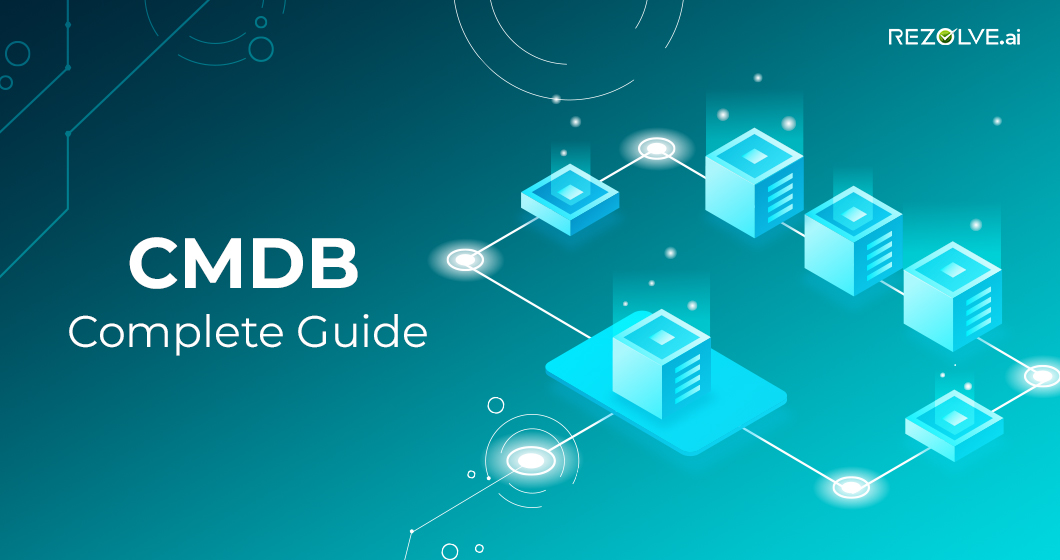


.webp)

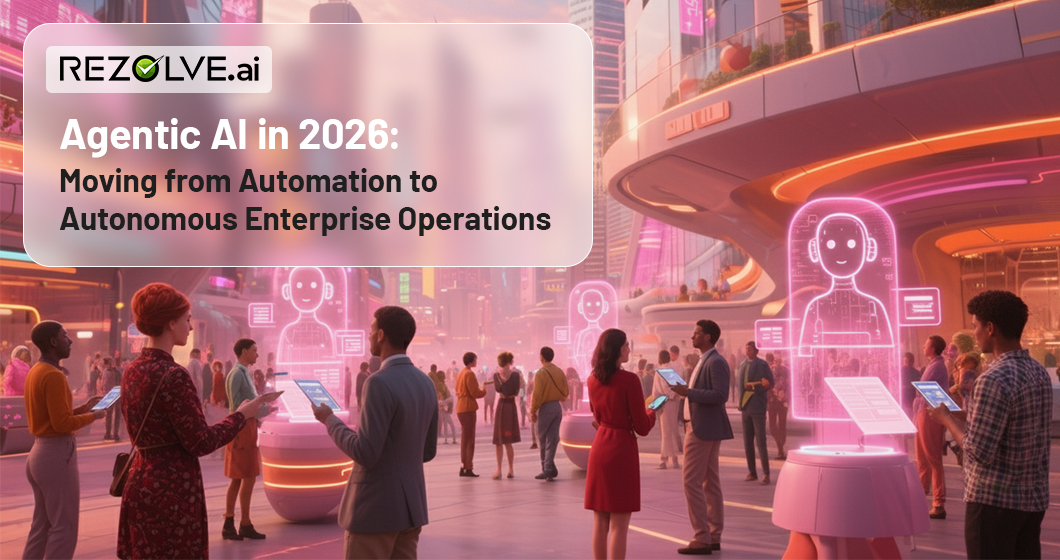
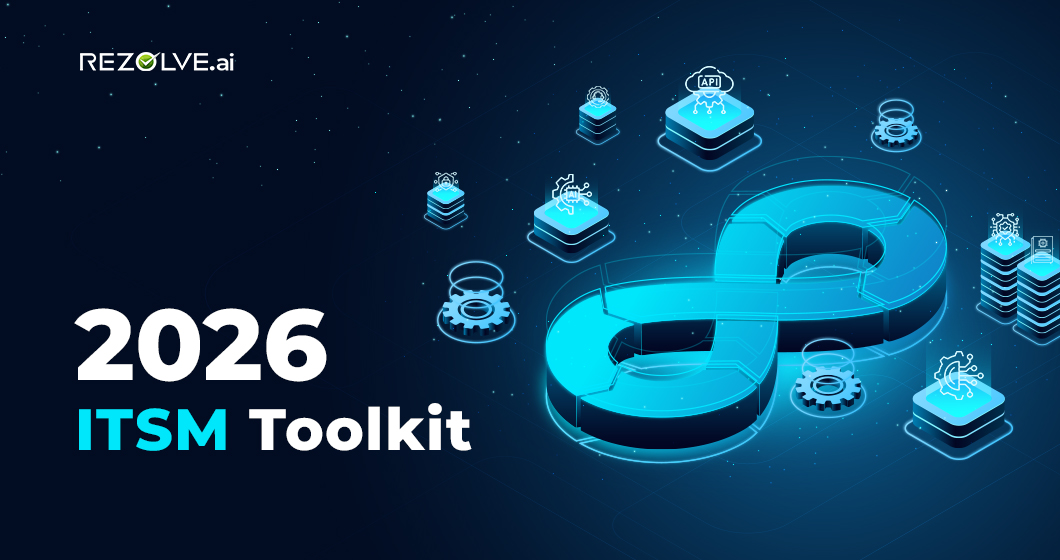

.jpg)

.png)








.png)